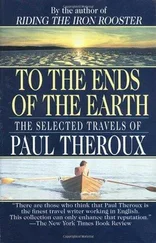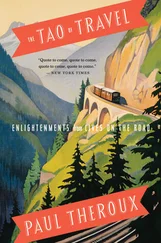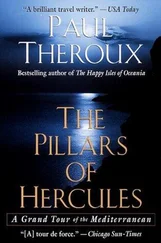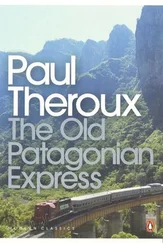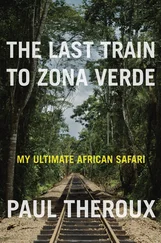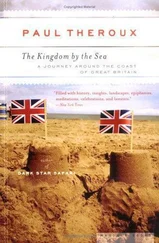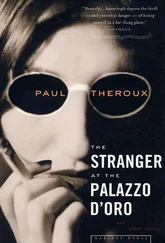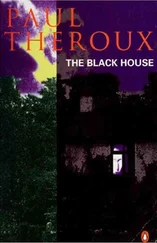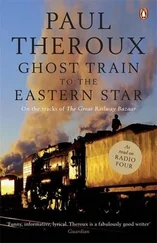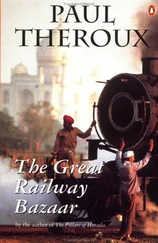Yet just as all those men, sweaty in the firelight, seemed on the verge of rushing apart in a frenzy of aimless rage, a figure appeared before them — Manyenga, like a hectoring choirmaster. He was chanting a word, unintelligible to Hock, and the rest of the crowd took it up as a cry. As they repeated it, they seemed more unified and solemn.
Manyenga took his place on a chair at the edge of the stamping, chanting men, and a masked figure danced before them. The mask was not made of carved wood — the Sena seldom carved; they made wide dugout canoes and shovel-like paddles and sometimes house idols of wood, but not masks. For ceremonies they wove bamboo strips into a frame and covered it with bark and leaves, and that was their conception of a mask, a fluttering headdress of dead leaves.
This was just such a mask — twisted together and ragged, not a face but a deliberate fixture. Knotted to it were scraps of pale cloth and plastic, the flimsy rippings of a white garbage bag, a large swollen beast’s head with a gaping mouth. Hock could see the face of the dancer staring wildly out of the mask’s mouth.
Another dancer met this masked figure in the center of the dance area, brightly lit by the bonfire. This second, opposing figure was cloaked in a dark cape, and instead of a mask its head had been entirely wrapped in a ragged cloth, like a monster with a filthy bandage around its head.
The masks were the more hideous for being so crude. The wooden or dead-leaf masks Hock had been shown by Sena elders in the past had an aesthetic appeal, were well made and symmetrical. But these masks, one of shredded plastic, the other of rags, frightened him with their coarse construction, as though they’d been twisted together by angry men in a hurry, using the castoff scraps from a trash heap. They were clumsy, insulting, grotesque, and terrifying for being so badly made.
Snowdon grinned in the light of the fire, delighting in the noise and flames, as the two figures sparred in a mock struggle, the tall man in the ragged mask of white plastic, and the squirming figure in the cloak and faceless wrapped head. They were also dancing, obeying the rhythm thumped out on the drums.
After less than a minute of this, Snowdon waved a red object at the dancers, and seeing it they faltered, hesitated, disengaged. The dwarf was too small to do much more than gesture with the red object. At the urging of Manyenga, still in his armchair, a bystander took the thing from Snowdon and placed it on the head of the white-masked figure.
Hock recognized it as his own, the red baseball cap he sometimes wore. But if that was meant to be him, the white-masked mzungu figure in the baseball cap, who was that other cloaked, contending figure with its head wrapped in rags? When the dancers resumed, stamping in a circle, it occurred to him that the second figure had no arms and merely swayed, and he took it to represent a snake.
The snake seemed to be getting the better of the Hock figure, backing him up, making him dance in retreat, shuffling and leaning forward like a mamba intending to strike.
He was sure of this when he heard the word njoka —snake! — shrieked by some of the boys, and the drawn-out ’zoongoo mooed by the men. The snake advanced to the plinking of the finger harp. The white-masked figure retreated to the sound of drumbeats and then skipped past the snake, confronting it. The movement was too crude to be balletic, yet there were elements of subtler dance steps, as though with some refinements this could be staged as a drama — the struggle of two masked figures in the firelight, to the counterpoint of drum thumps and finger pluckings.
He was fascinated and appalled to see this battling creature with the horrible face in the ridiculous headdress fending off the snake. The snake Hock took to be sexual, though he knew he was noted for his fearlessness as a snake handler. The bystanders cheered the thrusting body of the snake, the evasions of the masked man.
Is that how I seem to them? Hock wondered — a cringing figure with a beaky nose and peeling skin, dancing away from the confrontation? Each time the snake pretended to strike, driving the mzungu figure backward, a cheer went up, the drums grew more insistent, and the mzungu spun around. But the snake had the advantage, moving smoothly, its whole head a ragged bandage; the mzungu stumbled on two uncoordinated feet.
And what did it mean when the snake twisted aside and a boy dressed as a girl — a rouged face and smeared lips, a tattered yellow dress — approached and these two caricatures began to dance as a pair, as the mzungu figure twitched behind them? Had they been clowning, Hock might have been reassured. But it was late, the fire was hot, the drums were loud, the plinking of the finger harp pierced his heart. This was not clowning.
All this talent, all this energy at night, from those who were so sleepy in the daytime. The spectators, men and boys, were emboldened by the music, perhaps, excited by the towering fire. Faces gleaming with sweat, golden-skinned in the light of the flames, they reached toward the dancing figures, shuffled forward, crowding them.
The boy in the yellow dress taunted both the masked figures. He was not masked, though he was luridly painted, his features exaggerated with the greasy makeup.
The sight triggered a memory. In his first year in the Lower River, just after the school at Malabo had been finished, Hock had gone back to school late after lunch. He’d been disturbed by a letter from home, a clingy letter that had made him furious. As he’d approached the classroom, he heard an unfamiliar voice, and laughter. He paused before entering, sidling up to the door, and saw one of the boys pacing at his desk and muttering in an imitation of him. A cruelly accurate imitation, approximating his stammering um-um-um in an explanation, his nodding head, his way of pacing, turned-in toes, knees lifted. And he’d been abashed. So as not to embarrass himself further, he made an announcing noise, waited for the scuffling to diminish, and entered the classroom to see that some students were solemn, some tittering. When he tried to resume the lesson, he found he did not have the heart to continue. Instead, he assigned them an essay topic and gave them the hour to complete it. Afterward he fled to his house and the letter from his father.
That was how he felt now, at the sight of a man in a mask that was meant to represent his face, a snake that he took to be an adversary, and a boy in a ragged dress, which baffled him.
Never mind what it meant to them. It horrified him in a way that was more alarming for being meaningless. His face reflected in a mirror had always disturbed him. As the subject of a Nyau dance he believed he was being ridiculed, and he remembered Gala’s warning. As for the boy he’d found mimicking him in the classroom, he’d never trusted him after that.
The drumming became a thunderous pounding of hand slaps. He backed away from the baobab stump, into the shadows, and withdrew to his hut.
HARDLY SEVEN, AND the morning sun slanting through the twiggy trees had filled the clearing at Malabo with stifling humidity, like an invisible smothering presence that bulked against his face, leaving his neck clammy and his body weak. The earth itself was baked dry and crisscrossed with paths pounded smooth by bare feet. The foliage of the mopane trees faded to yellow, the thorn acacias coated with dust.
Squinting into the distance, because a dog had begun an irritable bark, Hock saw a shimmering spectral blob in the heat, coming closer, resolving itself into two figures, large and small, Manyenga and a skinny burdened girl hurrying behind him.
“Morning, chief,” Hock said.
Читать дальше

